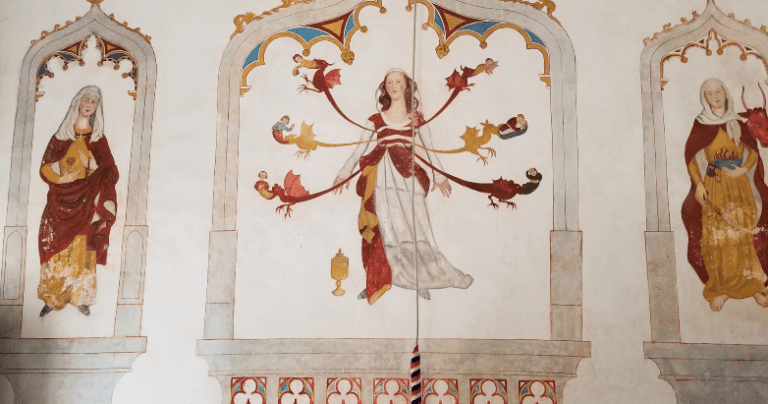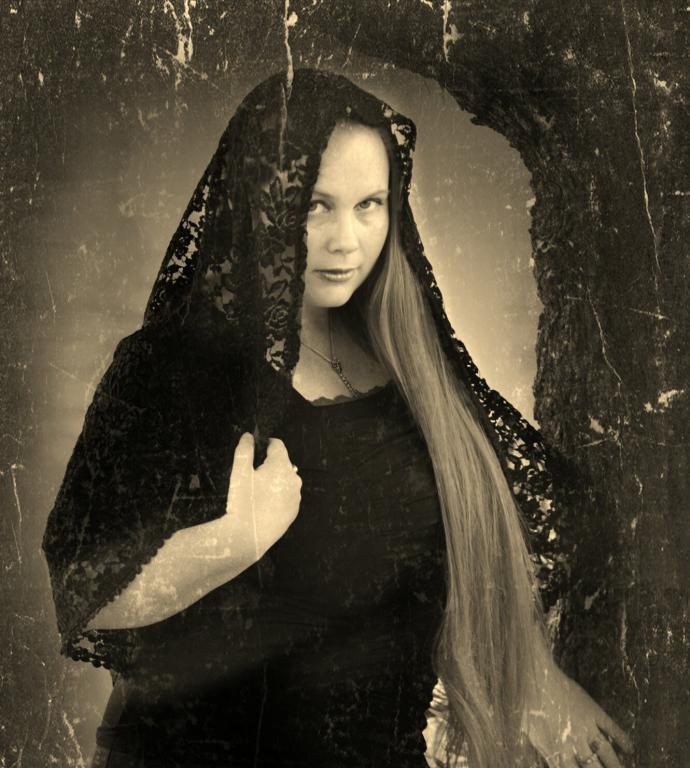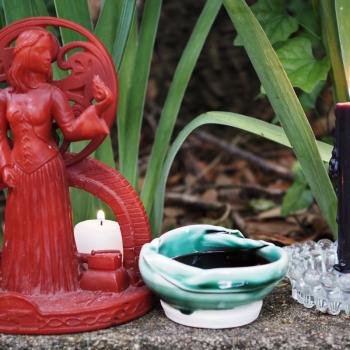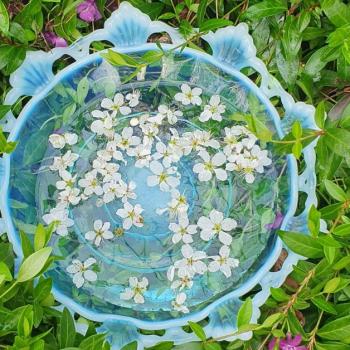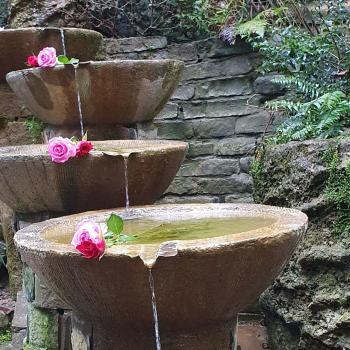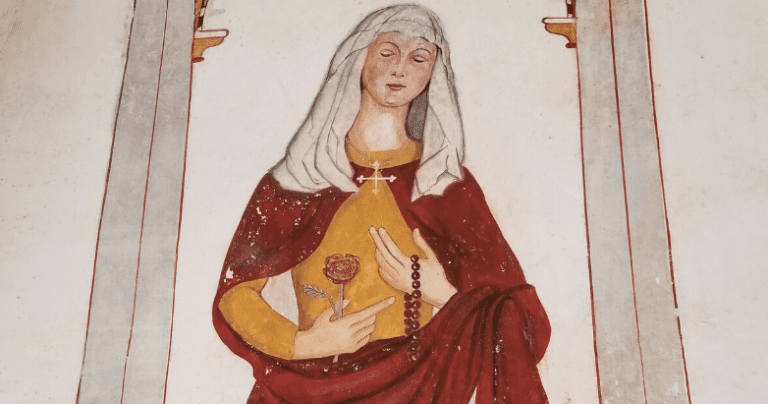
Saint Aelswitha of Glastonbury
Saint Aelswitha of Glastonbury is a little known and mysterious Saint. She is deeply connected with the Glastonbury landscape, but not much is known about her. There is also a spirit known as the Lady of Avalon who has appeared to numerous pilgrims who journey to this sacred land. Could these mysterious ladies be one and the same?
The Lady of Avalon is an interesting local spirit that is often seen in Glastonbury. She is said to appear to pilgrims who need to believe in the healing powers of the place. She comes forth to the non-believers to show them the way to Avalon, to healing and to the “Shining Ones” or Fairy Folk. She appears all over Glastonbury, but most sightings seem to be at the Chalice Well Garden. While the Chalice Well is near and dear to my heart, I am often conflicted at its connection to the faery realms because it is full of Iron. The Fair Folk have adverse reactions to and despise Iron. Indicating that perhaps the Lady of Avalon isn’t a Faery Woman after all. Perhaps she is an ancestral spirit deeply connected to the magic of the land.
In the small but beautiful St. Patrick’s chapel located at the Glastonbury Abby is the only known depiction of Saint Aelswitha. A painting in the medieval style depicts her in a red dress adorned with a Celtic cross. She is holding a rose in one hand and a rosary in the other. In this painting, her robes are based on similar folds found in other medieval imagery. The hand holding a rose is pointing to the rosary she is holding in the other hand. The Rose she holds is believed to represents Our Blessed Lady, Mary the mother of Christ. The cross around Aelswitha’s neck is based on one of the two Glastonbury crosses frequently used. This one has trefoil endings.
The description found in the chapel reads “Little is known of this saint but there is a historical reference by John of Glastonbury who says “The virgin St. Aelswitha rest there, whole and untouched in flesh and blood, buried between the high altar and the tomb of King Arthur, with a hair shirt and holy veil, as those who have seen her have testified”
My own thoughts…
Saint Aelswitha is interesting because of the way she is portrayed. While the explanation above is the official words of the church, I see much deeper meanings found in her painting. To start, if we look at the Celtic cross that adorns her dress the equal-armed cross perhaps has a deeper meaning. A Celtic cross, often depicted with equal arms, is a pagan symbol not associated with Jesus’ crucifixion. This cross is very specifically called a Cross bottony and is very similar to the Cross Fleury and the Cross of Saint Maurice. These crosses are associated with the Order of the Saints of Lazarus as well as used in medieval heraldic crosses especially during the time of the crusades, giving a possible link to the Knights Templar.
I find it very interesting how this connects with Glastonbury, the Holy Grail, and the Templars. I do not believe this cross is signifying anything to do with Christianity. This thought also depends on the description of her wearing a “hair shirt” A hair shirt was a very coarse garment that was then worn as a sort of penance, or as a punishment to “non-believers”. So why would a woman, who supposedly is being punished for “non-belief” end up on the wall of a Christian Chapel next to 2 other women who have stories of otherworldly origins and were also demonized. The gesture she is holding in her right hand with the rose could indicate “hidden knowledge” which may be coded into the painting as “Sub Rosa” meaning hidden beneath the rose.
I wanted to see if I could find anything else on this mysterious Saint and so dug a little deeper and found some interesting information. Historically there is a woman who lived in the Kingdom of Mercia (England) in the mid 800’s with the name Æthelswith she is in the royal family (Great Aunt) of Edgar 1 who was crowned king at Bath in mid 900s. There is another woman in this same family tree with a similar name, Ealhswith. In old English, Aethel means “Noble” so this could act as an epithet.
I found information that indicated Æthelswith could indeed be Saint Aelswitha. Archeological and historical evidence suggests that she indeed was a queen. 2 golden rings were recovered by archeologists who believe they are Anglo-Saxon in origin. They have the words “Aethelswith Regina” inscribed on them. In Latin this translates Queen Aethelswith. I also found information saying that after the Viking attack on their home she and her husband escaped and lived on a small island in Somerset. Very reminiscent of the Isla of Avalon which many believe is modern-day Glastonbury, in Somerset. I also found another account where it is said that she became a nun in her later years and perhaps was connected to the Abby or even the Isle of Avalon that way.
Conclusion
I do believe that Saint Aeslwitha is most likely either Æthelswith, Ealhswith, or someone in their family line. However, it is entirely possible is someone completely different and just has a similar name. She clearly cared for the land she lived on and still has a presence there. After not only feeling the energy, visiting the chapel, and walking the sacred grounds of Glastonbury I am not only convinced that the spirit so many see and call The Lady of Avalon is not a Faery woman, rather she is an ancestral spirit that dwells within the local landscape, still tending the hearts, minds, and souls of the people she perhaps once ruled over. This explains why she has a strong presence in Glastonbury but seems to have a much different energy than the typical Faery Woman or Faery Queen.
